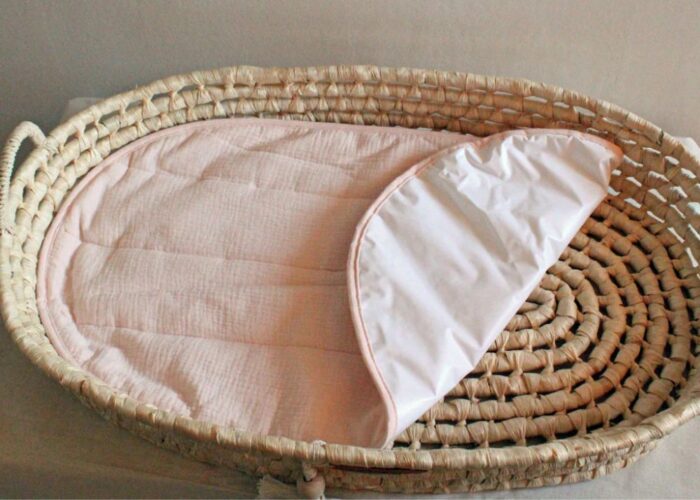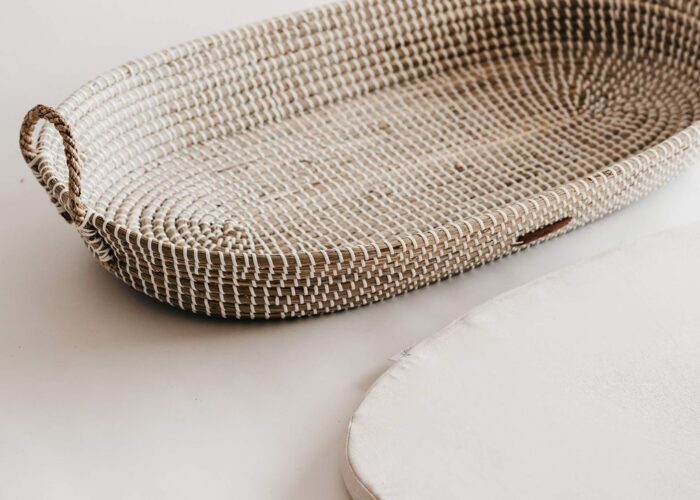When caring for infants, maintaining cleanliness of the changing pad is extremely important. The changing pad not only comes into direct contact with the baby’s sensitive skin but can also harbor bacteria and germs if not cleaned properly. This article will guide you on how to clean a changing pad, ensuring safety for your precious baby and keeping the pad fresh and clean. From selecting the appropriate cleaning solution to specific implementation steps, each detail is meticulously explained, making it easy for you to apply in practice. Let’s begin the cleaning process to create the safest and most comfortable environment for your baby, starting with everyday items like the changing pad.
Contents
- 1. How to clean a changing pad?
- 2. FAQs
- 2.1 Are changing tables sanitary?
- 2.2 Are changing pads washable?
- 2.3 Can I put a changing pad in the washing machine?
- 2.4 How long do you use a changing table?
- 2.5 How often should I clean a changing pad?
- 2.6 Can I use bleach to sanitize a changing pad?
- What is the best way to remove stubborn stains from a changing pad?
1. How to clean a changing pad?
Cleaning your changing pad regularly is essential for maintaining a hygienic environment for your baby. Here’s a step-by-step guide on how to clean a changing pad effectively:
Materials:
- Mild soap or baby-safe cleaning solution
- Warm water
- Clean cloth or sponge
- Disinfectant spray or wipes (optional)
- Changing pad cover (optional)
Step by Step:
Step 1: Prepare the Cleaning Solution
Dilute mild soap or baby-safe cleaning solution in warm water in a basin or bowl. Ensure that the solution is gentle and safe for your baby’s skin.

Step 2: Remove any Excess Debris
Before cleaning, use a clean cloth or sponge to wipe away any excess debris or spills from the changing pad surface.
Step 3: Clean the Surface
Dip the clean cloth or sponge into the prepared cleaning solution, and gently wipe down the entire surface of the changing pad. Pay special attention to any stains or areas with visible dirt. Avoid using harsh chemicals or abrasive scrubbers, as they may damage the surface or irritate your baby’s skin.
Step 4: Rinse Thoroughly
After cleaning, rinse the changing pad thoroughly with clean water to remove any soap residue. Ensure that all cleaning solutions are completely washed away to prevent any potential skin irritation for your baby.
Step 5: Disinfect (Optional)
For an extra layer of cleanliness, you may choose to disinfect the changing pad using a disinfectant spray or wipes. Follow the manufacturer’s instructions for proper application and contact time.

Step 6: Dry Completely
After cleaning and rinsing, allow the changing pad to air dry completely before using it again. Ensure that it is thoroughly dry to prevent the growth of mold or mildew.
Step 7: Replace Changing Pad Cover (Optional)
If your changing pad has a removable cover, consider washing it separately according to the manufacturer’s instructions. Use a gentle detergent and wash it on a gentle cycle to maintain its quality.
By following these steps regularly, you can keep your changing pad clean and hygienic, providing a safe and comfortable environment for diaper changes for your baby.
2. FAQs
2.1 Are changing tables sanitary?
Changing tables can be sanitary if they are cleaned and maintained properly. Regular cleaning and disinfection of the changing table surface, as well as washing or replacing changing pad covers regularly, can help prevent the spread of germs and bacteria. Additionally, using a diaper pail with a tight-fitting lid and emptying it regularly can help minimize odors and maintain cleanliness. It’s important to follow proper hygiene practices, such as washing your hands before and after diaper changes, to further reduce the risk of contamination.
2.2 Are changing pads washable?
Yes, changing pads are typically washable. Many changing pads come with removable covers that can be easily washed in a washing machine. Additionally, the changing pad itself can often be wiped down with soap and water or a mild cleaning solution. It’s important to follow the manufacturer’s instructions for cleaning and washing to ensure that the changing pad remains in good condition and free from germs and bacteria. Regular washing and cleaning of changing pads are essential for maintaining hygiene and providing a clean surface for diaper changes.
2.3 Can I put a changing pad in the washing machine?
Yes, in most cases, you can put a changing pad cover in the washing machine for cleaning. However, it’s essential to check the care instructions provided by the manufacturer to ensure that the cover is machine washable. Additionally, it’s recommended to wash the cover in cold water on a gentle cycle with a mild detergent to prevent damage to the fabric. After washing, allow the cover to air dry or tumble dry on low heat. It’s important to maintain cleanliness and hygiene by regularly washing and cleaning changing pad covers, especially since they come into direct contact with your baby’s skin during diaper changes.
2.4 How long do you use a changing table?
You can use a changing table for as long as it continues to meet your needs and preferences. Many parents use a changing table until their child is potty trained, which typically occurs around the age of 2 to 3 years old. However, some parents may continue to use the changing table beyond this age if it’s still convenient and practical for them. Ultimately, the decision to stop using a changing table depends on factors such as your child’s development, your family’s lifestyle, and available space in your home.
2.5 How often should I clean a changing pad?
You should clean a changing pad regularly to maintain hygiene and cleanliness, ideally after each use. However, if this isn’t feasible, aim to clean the changing pad at least once a day, especially if it’s heavily soiled. Additionally, it’s a good idea to disinfect the changing pad periodically to kill any germs or bacteria that may be present. Overall, frequent cleaning of the changing pad helps ensure a safe and sanitary environment for your baby during diaper changes.
2.6 Can I use bleach to sanitize a changing pad?
Using bleach to sanitize a changing pad is not recommended, especially if the changing pad is regularly used for diaper changes. Bleach can be harsh and may leave residue that could irritate your baby’s sensitive skin. Instead, it’s best to use mild soap and water or a baby-safe cleaning solution to clean the changing pad. If you want to disinfect the changing pad, you can use a disinfectant spray or wipes that are specifically formulated for use on baby items. Always follow the manufacturer’s instructions and ensure that the changing pad is thoroughly rinsed and dried after cleaning to remove any residue.
What is the best way to remove stubborn stains from a changing pad?
To remove stubborn stains from a changing pad, there are several effective methods you can apply. First, try soaking the pad in cold water to soften and loosen the dirt. Then, use a mixture of baking soda and hydrogen peroxide to create a thick paste, apply it to the stain, and cover it lightly with plastic wrap. Leave this mixture on the stain for about 24 hours before laundering. Additionally, using diluted white vinegar can also help remove stains, especially those from liquids like fruit juice or milk. Always remember to check if the cleaning method is suitable for the fabric of the changing pad and test it on a small area before applying to the entire stain. It’s essential to address stains as soon as possible to prevent them from deeply penetrating the fabric and becoming harder to remove.
If you have any further questions, don’t hesitate to send thanhcongcraft an email us at info@thanhcongcraft.com or message us at WhatsApp: +84967485411. Hope to serve you soon! Best regard!












